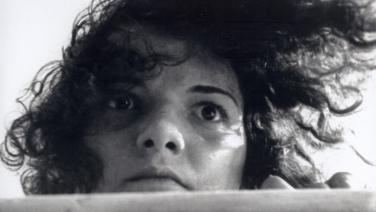

THE BRAZILIAN FILM LIBRARY - An Archive in a state of Emergency
Is it really possible and desirable to erase our past, our memory; that set of images and documents that render our gaze never-ending? What does it mean to make the works preserved at the Brazilian Film Library and the library itself (which has gained an undeniable level of recognition in both Brazil and abroad) disappear from the history of cinema? Will the fact that the Brazilian government has abandoned the Film Library lead to the loss of important contributions to cinematographic language that have been studied in films, documents, books and many other written works, and which gave rise to other films that were immortalised in restorations stored in one of the most important archives in the world? Why should we even have to ask these questions today, in 2020?
Founded in 1940, the Brazilian Film Library preserves our memory. Its buildings house amateur and home movies ranging from the beginning of the 20th century to the present day, movies which we may never be able to see or write about. The library also contains the archives of the Estado Novo Department of Press and Propaganda (DIP), along with a considerable part of the collection belonging to TV Tupi, the first television station to operate in the country. It contains all the images and material generated by Canal 100, which made film documentaries about key sporting events in Brazil, mainly football, and a large part of contemporary Brazilian audiovisual production, as well as the basic archives belonging to Cinema Novo, including the Glauber Rocha and Paulo Emílio Salles Gomes archives. Its buildings contain fragments of life and pieces of time. There are 250 thousand rolls of film and approximately 1 million documents that call to us from afar. Here we pay tribute to all the departments and sectors of the Film Library, to all their activities and programmes, and to all the workers without whom our memory would be lost.
LIMITE, a film by Mário Peixoto (Brazil, 1931)
The only film finished by Mário Peixoto, Limite, is considered one of the most important works in the history of Brazilian cinema. Extremely innovative for its era, it is directly inspired by Soviet cinema, German expressionism and Griffith's classic films, professing a view of film as art. Today, its importance is widely recognised due to its highly innovative approach to language, characterised by a slow, leisurely pace, shots of Brazilian landscapes and its revolutionary camera work, which alternates static stills with vertiginous movements set to classical music.
In a national survey of some of the leading film critics in Brazil, carried out by the Brazilian Film Library in 1988, Limite was chosen as the best Brazilian film of all time. It has also been recognised by UNESCO's Memory of the World Programme Committee for Latin America and the Caribbean.
Synopsis
One topic, one situation and three stories. The topic: man's yearning for the infinite, his clamour and his defeat. The situation: a boat adrift on the ocean with three castaways, one man and two women. The three stories are those that the characters tell one another. The situation determines the topic of the three stories. Cosmic tragedy occurs in the boat, towards which all three stories converge. The castaways are despondent; they have stopped rowing and seem resigned to their fate.
Is it really possible and desirable to erase our past, our memory; that set of images and documents that render our gaze never-ending?
